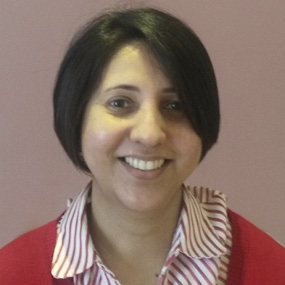COVID ICU reality for a predominantly Paediatric Anaesthetist

Consultant Paediatric Anaesthetist
As anaesthetists we were asked to get ‘fit tested’ with an FFP 95 mask. That was my first COVID moment on 26 February 2020. Then there were daily emails and updates regarding the admissions to the High Consequence Infectious Diseases Unit and the trust’s response to provide care for a huge number of patients requiring level 3 care (300 to be precise).
As anaesthetic consultants we were asked to ‘upskill’ to manage patients on ICU. So, I attended Dr Rosalinde Tilley's very informative and detailed lecture followed by a training session on CARE VUE, an electronic patient record system used solely in our ICU. It was only when our clinical lead asked me to join the ICU rota for the newly acquired Forest Intensive Care Unit (formerly PICU) that the penny dropped. From then on, I was devouring any article that was churning out from NEJM, LANCET, BMJ and of course AAGBI and ESICM webinars. To believe, or not to believe, or rather, who to believe was the question. In order to gather firsthand experience, I shadowed the ICU team for a day. That was truly humbling as I saw the sickest COVID patients being looked after by the exemplary ICU team.
Working on the ICU has brought back memories from 13 years ago when I was a trainee. I had to very quickly learn to do daily reviews including FLATCHUG, RAAS score, APRV mode of ventilation, use of new sedative drugs e.g. Quetiapine, Well’s criteria for DVT, RRT, calculating physiological dead space and learning its significance (not done that since FRCA!).
Also, patients weigh 120 to 150 kg (not 1.5 or 15 kg!), have size nine endotracheal tubes, are on propofol, fentanyl, clonidine and midazolam infusions for sedation (where is sevoflurane?) and you see the same patients when you return to work the next day unlike in anaesthesia where it’s a new set of patients every day.
Then there are COVID specific terms ‘L” and ‘H” phenotype, PCT (procalcitonin), proning teams, line teams, communication teams and the list goes on. Every day has been a school day on the ICU. My colleagues have been very understanding and look after one other in every possible way. The ICU consultants are excellent and very supportive.
I have the utmost respect for the junior doctors, nurses, physiotherapists and dieticians looking after these COVID patients as they are all truly amazing. There are lots of ‘invisible ‘people like the ICU technicians, pharmacists, Omnicell stockists, healthcare assistants, cleaners, porters and radiographers that make all the difference. The patients and their loved ones are the true soldiers in this drudgery as they battle this disease physically, mentally and emotionally. It’s truly a meaningful experience on adult ICU and I hope my humble presence acts as a helping hand in the stupendous effort of the critical care and anaesthesia team.
Tahzeeb Bhagat
